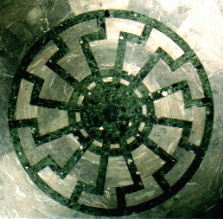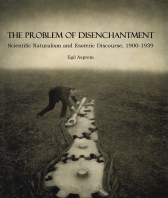Next up in the cyberproceedings from the Contemporary Esotericism conference is a paper by Eva Kingsepp on Nazi/SS occultism, the changing perceptions of it in “official memory culture”, and its reception and influence on contemporary occulture. The primary focus is on the heavily mythologized symbol of the “Black Sun”, and the SS’ Wewelsburg castle, alleged to be the magical centre of the Third Reich, where Heinrich Himmler gathered his SS “knights” and performed sinister rituals under the occult sign of the Black Sun.
Or not. As Kingsepp shows, myths of this kind have by now been properly debunked by real historiography. That, however, does not diminish the effect of the Nazi-occult mythology in popular culture and occulture.
From the introduction:
The aim of this paper is twofold, both related to the uses of history. The first concerns the basic assumptions about Nazi occultism as a phenomenon in itself. -What are the discursive relations between official memory culture and popular culture regarding Nazi occultism? The second is to look at the Temple of Set, more specifically its Order of the Trapezoid, as an example of how an esoteric group relates to Nazi occultism and puts this, as it is being conceived by leading members of the Order, into magical use. -From where do practicing occultists working with elements from National Socialism get the theoretical basis for what might be called their magical ideology







[…] of August’s conference on contemporary esotericism is slightly different from previous installations in the series. It is not too contemporary, but it adds a discussion that should be […]
[…] contemporary neo-nazi esoteric groups, Strube’s book is also a valuable contribution to the slowly growing academic scholarship that debunks and replaces grossly inaccurate pop-history on the […]